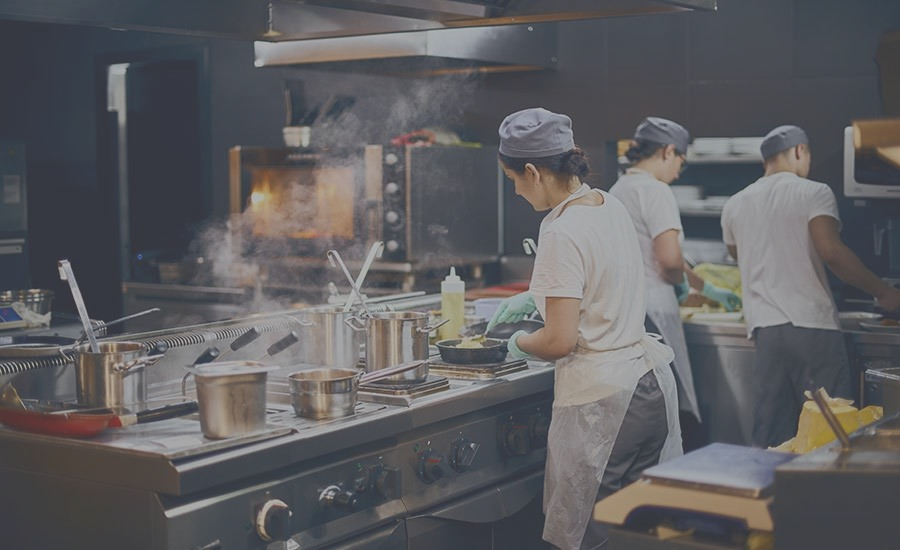
There is a monumental task associated with institutional kitchens, found in schools, hospitals, correctional facilities, and other large-scale settings. Effective kitchen ventilation becomes even more important at this scale. We will explore various types of ventilation systems, their significance, installation considerations, and maintenance practices in this guide, which will focus on ventilation systems designed for institutional kitchens.
INSTITUTIONAL KITCHENS NEED PROPER VENTILATION
1. Firstly, there is a significant amount of smoke, grease, and odors generated during cooking. Effective ventilation ensures the safety and well-being of the kitchen staff and patrons.
2. Institutional kitchens handle large quantities of flammable materials. Proper ventilation helps prevent the buildup of combustible substances.
3. The use of adequate ventilation is often a mandatory requirement to maintain compliance with health and safety regulations in institutional kitchens.
4. Well-ventilated kitchens reduce heat buildup, making kitchen staff more comfortable and productive.
KITCHENS IN INSTITUTIONS: VENTILATION SYSTEMS
1. Exhaust Hoods: Cooking fumes and heat are captured and removed by exhaust hoods, which come in wall-mounted, island, and canopy styles.
2. Make-Up Air Systems: These systems provide a controlled influx of fresh outdoor air to replace the air being exhausted by the hoods, ensuring proper air balance and preventing negative pressure.
3. UV-C Ventilation Systems: UV-C Ventilation Systems: UV-C technology can be integrated into ventilation systems to sterilize and neutralize airborne pathogens.
4. Demand-Controlled Ventilation: A demand-controlled ventilation system adjusts exhaust and supply air according to cooking activity, maximizing energy efficiency and air quality.
CHOOSING A SYSTEM: KEY CONSIDERATIONS
1. To determine the appropriate ventilation capacity, consider the amount of cooking done each day.
2. The type and placement of ventilation components will be affected by the layout of the kitchen, including the placement of cooking equipment.
3. For institutional kitchens, local building and health codes may specify ventilation requirements.
4. Reduce long-term operating costs by choosing energy-efficient systems.
5. In settings where noise can disrupt operations, consider the ventilation system's noise output.
BEST PRACTICES FOR INSTALLATION AND MAINTENANCE
1. To ensure compliance and optimal performance, hire professionals experienced in institutional kitchen ventilation.
2. Maintain airflow by regularly cleaning hoods, filters, and ductwork.
3. Conduct routine inspections to identify fire hazards, blockages, or malfunctions.
4. Ensure that ductwork is properly sealed and free from blockages to prevent air leaks.
5. To maximize the benefits of your ventilation system and prevent misuse, train your kitchen staff on how to use it properly.
Institutional kitchens play a crucial role in large-scale dining operations, requiring efficient and safe functioning at all times. Proper ventilation is essential to maintain air quality, hygiene, and compliance with regulations and fire safety protocols. By carefully selecting an appropriate ventilation system and implementing regular maintenance practices tailored to the demands of institutional kitchens, you can foster a kitchen environment that promotes culinary excellence and the well-being of all stakeholders involved.
Send your query today & our team would be happy to assist you because we care industry to utilizing kitchen equipment.